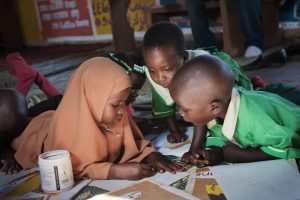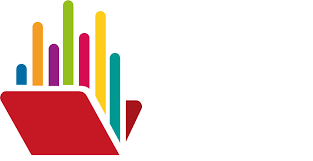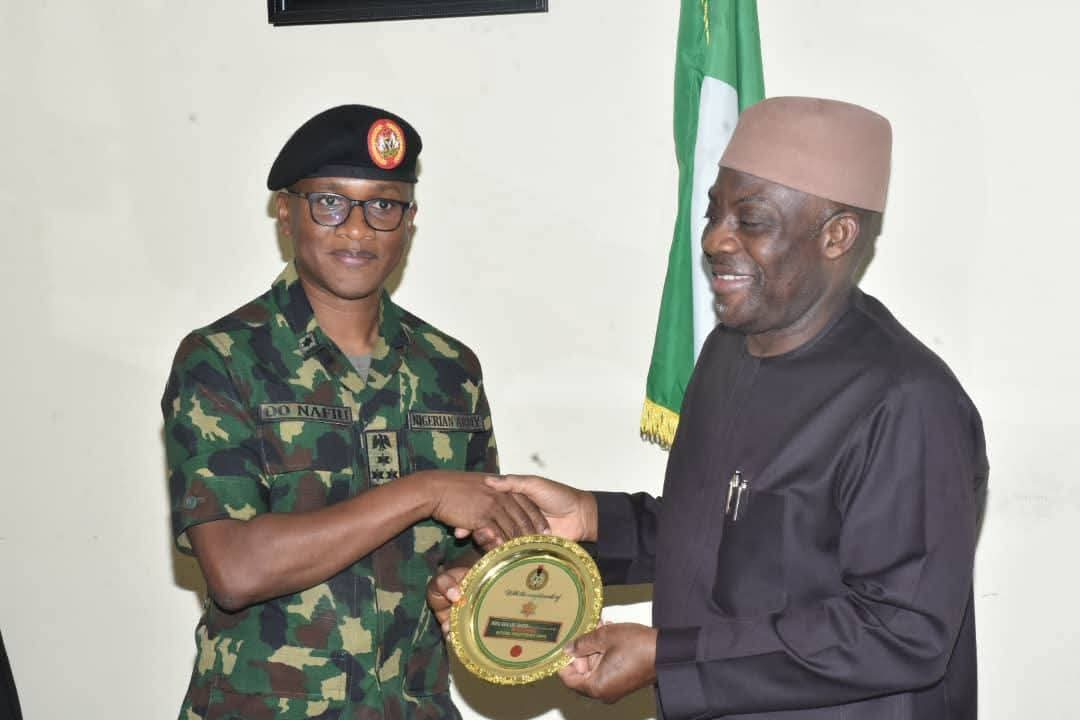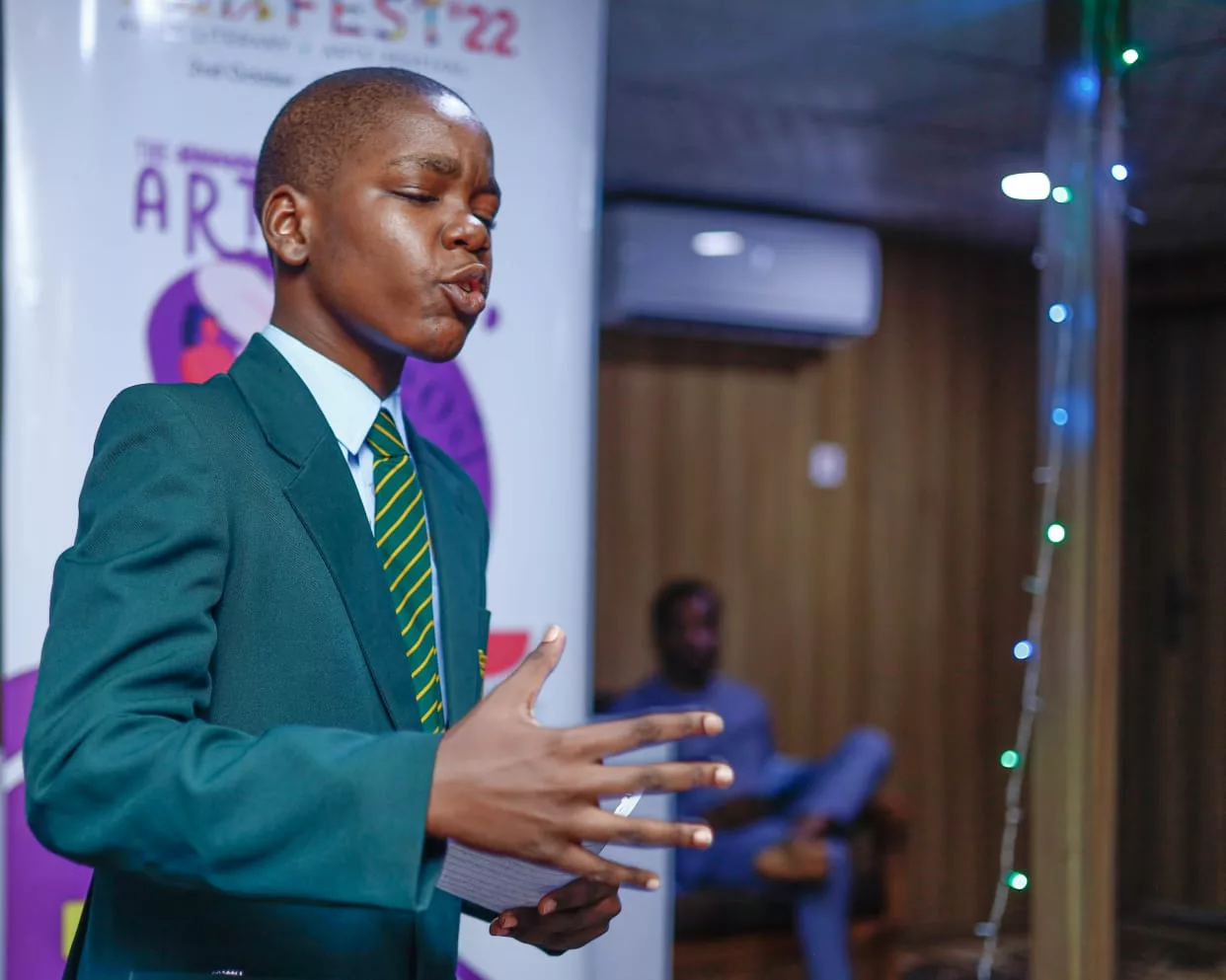The first five years ending 2020 saw slow progress on achieving the sustainable development goals four (SDG 4), according to the latest UNESCO Global Education Monitoring report. Even universal primary completion, which had been a target 43 years ago, that is in 1980, is not anticipated to be accomplished by 2030. The goal of universal secondary completion was clearly unrealistic by 2020 with one in four African children failing to complete basic education.
Sustainable development goal four is about quality education and is among the 17 Sustainable Development Goals established by the United Nations in September 2015. The full title of SDG 4 is “Ensure inclusive and equitable quality education and promote lifelong learning opportunities for all.”
In addition to slow progress and missed basic education targets, the COVID-19 epidemic has seriously disrupted educational systems, adding new challenges. Reversals in important education indicators are anticipated in nations that had prolonged school closures, albeit it will take some time to determine the severity.
It is evident that the targets are no longer reachable, regardless of the amount of money invested. They were possibly never attainable and were always aspirational.
Nonetheless, a significant development over the past two years has been the establishment of national targets by countries for a number of SDG 4 indicators to be met by 2025 and 2030. This action completes a pledge that nations made in 2015 as part of the Education 2030 Framework for Action, and it permits the issue to be reframed as: What will it take for nations to meet the 2030 goals they have established for themselves rather than the aspirational goals?
The Global Education Monitoring Report team estimated in 2015 that it would cost a total of USD 5.10 trillion, or roughly USD 340 billion per year from 2015 to 2030, to achieve the key SDG 4 targets, which include ensuring universal pre-primary, primary, and secondary education by 2030 in low- and lower-middle-income countries.
This cost was roughly 2.30 times greater than the annual total cost in 2012, reflecting a combination of higher student numbers (for example, five times more students would need to be enrolled in pre-primary and upper secondary education in low-income countries) and higher per-student costs, which would mostly the result of falling pupil/teacher ratios in pre-primary and higher teacher salaries at pre-primary at primary education. In relative terms, the total cost would have to increase from 3.50 percent to 6.30 per cent of GDP between 2012 and 2030.
The estimations were updated in 2020 to account for the advancement made thus far, preserving the majority of these assumptions but significantly modifying a few of them. In low- and lower-middle-income countries, the total cost to achieving SDG 4 by 2030 remained constant, but the annual financial requirement jumped from USD 340 billion to USD 504 billion, primarily due to the shorter time frame. The annual financing gap would rise from USD 39 billion to USD 148 billion, or from 12 per cent to 29 per cent of the entire expenditure, while only USD 356 billion of that would be financed by domestic financial resources (UNESCO, 2020).

Four additional variables, in addition to the slower-than-expected pace and the shorter timetable, contributed to the wider finance gap: lower-than-expected GDP growth in low-income nations, a modest rise in planned student enrollment by 2030, revised building cost criteria for classrooms, and a quicker than anticipated convergence towards pupil-to-teacher ratio targets.
Nigeria has an annual financing gap of N484 billion (USD 1.041 billion), that is, 2.30 per cent of its gross domestic product (GDP) and will need about N715 billion (USD 1.539 billion) to plug this SDG 4 financing gap 2023 and subsequent years and N842 billion (USD 1.812 billion) by 2027 if Africa’s most populous country is to meet its national targets for sustainable development goal four. These figures are 3.40 per cent of gross domestic product (GDP) in 2023 and 4 per cent of GDP in 2027. These estimates are subject to average GDP growth rates, which vary year-over-year.
Between 2023 and 2030, low-income and lower-middle-income countries will need to spend a total of USD 3.70 trillion to meet their respective sustainable development goal four (SDG 4) targets.
This means that in the next seven years, low-income and lower-middle-income countries will spend USD 461 billion on average each year, to meet national targets. The average yearly cost of it will be USD 408 billion in lower-middle-income countries, that is USD 97 billion yearly and USD 52 billion in low-income countries. Pre-primary schooling will more than triple in price during this time.
Funding solution scenarios
The Global Education Monitoring report stated that there is scope for more equitable, more effective and more external financing to close up much of this gap. Framing the funding solutions scenarios, the report’s costing model incorporated realistic but ambitious domestic resource mobilisation projections up to 2030.
But was modest in its official development assistance (ODA) projections. ODA government aid that promotes and specifically targets the economic development and welfare of developing countries.
The first scenario is to raise the ODA as a percentage of gross domestic product. However, to raise official development assistance, Development Assistance Committee, (DAC), the principal body through which the Organisation for Economic Co-operation and Development (OECD) deals with issues related to co-operation with developing countries has to raise their ODA expenditures as a percentage of gross domestic product from the current level of roughly 0.35 per cent to the stated aim of 0.7 percent. The DAC comprises 22 Member States and the European Commission.
The second change is an increase in ODA funding for education from the current 8 per cent to 12 per cent. Third, from around 60 per cent to 90 per cent more education money is directed toward elementary and secondary education. Fourth, from around 60 per cent to 100 per cent more education funding is given to low- and lower-middle-income nations.
To support basic and secondary education, around USD 7 billion is currently allocated to low- and lower-middle-income nations. This sum would increase to USD 14 billion if ODA as a percentage of donor countries’ gross national income were doubled.
The amount of ODA for low- and lower-middle-income countries would rise by USD 6.5 billion if the share going to education increased from 8 per cent to 12 per cent. The amount to be spent on basic and secondary education in low- and lower-middle-income countries would increase by USD 8.2 billion if the portion of aid to education that goes to the post-secondary level is reduced to 10 per cent.
Last but not least, preventing upper-middle-income or high-income countries and territories from receiving education aid would leave low- and lower-middle-income nations with USD 36 billion to use toward reaching their national SDG 4 targets.
Placing Nigeria
Edugist’s check shows that Nigeria is a lower middle-income country and Africa’s largest economy, and most populous country, but the country faces daunting development challenges. In the 2023 budget, the education sector got N1.79 trillion (2.3 billion dollars) — representing 8.20 per cent of the appropriation bill — according to Zainab Ahmed, minister of finance, budget, and national planning.
Giving a further breakdown, the minister said N103.29 billion (USD 222.368 million) was allocated for Universal Basic Education Commission (UBEC) while transfers to the Tertiary Education Trust Fund (TETFUND) for infrastructure projects in tertiary institutions is N248.27 billion (USD 534,488 million).
Ahmed stated that N470 billion (USD 1,011 billion) had been set aside for pay increases and the revitalisation of tertiary education. Education received N923.79 billion (USD 1.988 billion), or 5.40 percent, of the N17.13 trillion (USD 36.878 billion) budget in 2023, an increase over 2022’s contribution to the sector.
When compared to the gap between recommended and actual allocations during the previous years, the rise, however, is negligible. For the past ten years, the average budgetary allocation for education has been roughly 8 per cent.
To free up funds for the social sectors such as basic education and primary healthcare, Nigeria must channel the money being spent on subsidies to these sectors, the Nigerian Economic Summit Group, a private sector-led think-tank and policy advocacy group based in Nigeria has said.
Nigeria’s Nigerian National Petroleum Company Limited (NNPC) spent 4.39 trillion naira ($9.7 billion) on a petrol subsidy last year, data from the state-owned firm showed on Friday, a cost the government has blamed for dwindling public finances. In 2021 the country spent N3 trillion on petrol subsidy.
Petrol subsidies is depriving the Nigeria social sectors of much needed financing. Basic education is vital to achieving human capital development and Nigeria can plug wastes to free up more funds for this critical sector.







 info@edugist.org
info@edugist.org 







